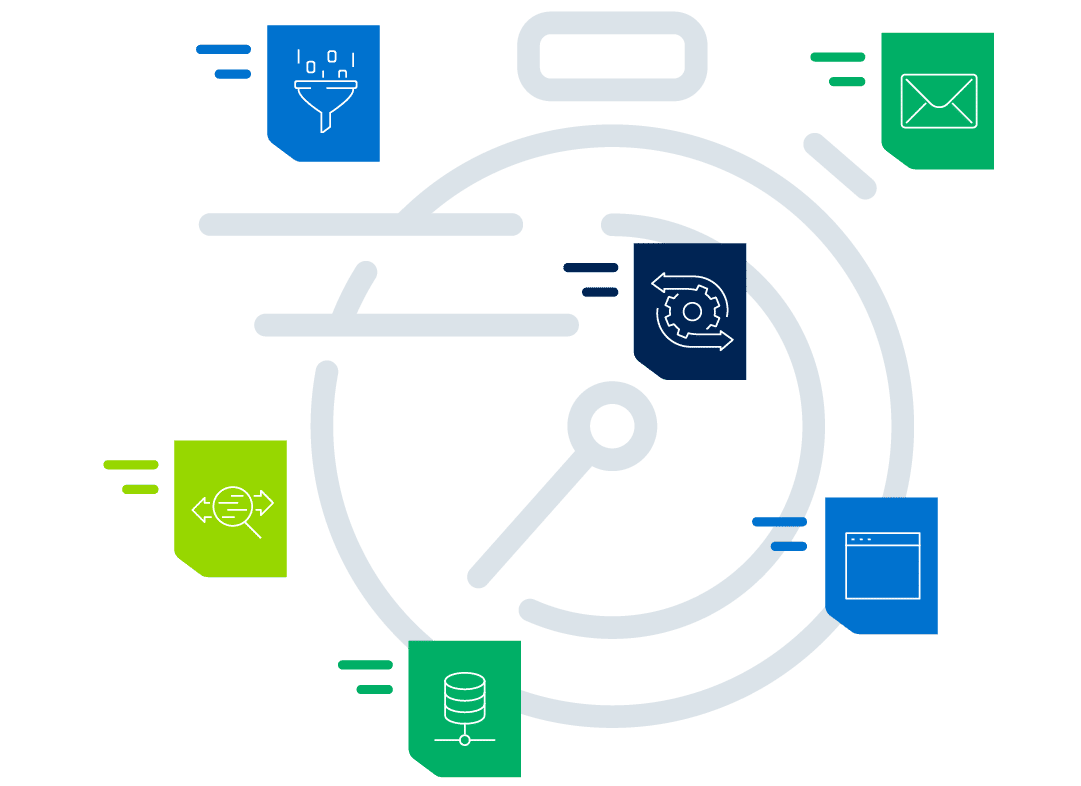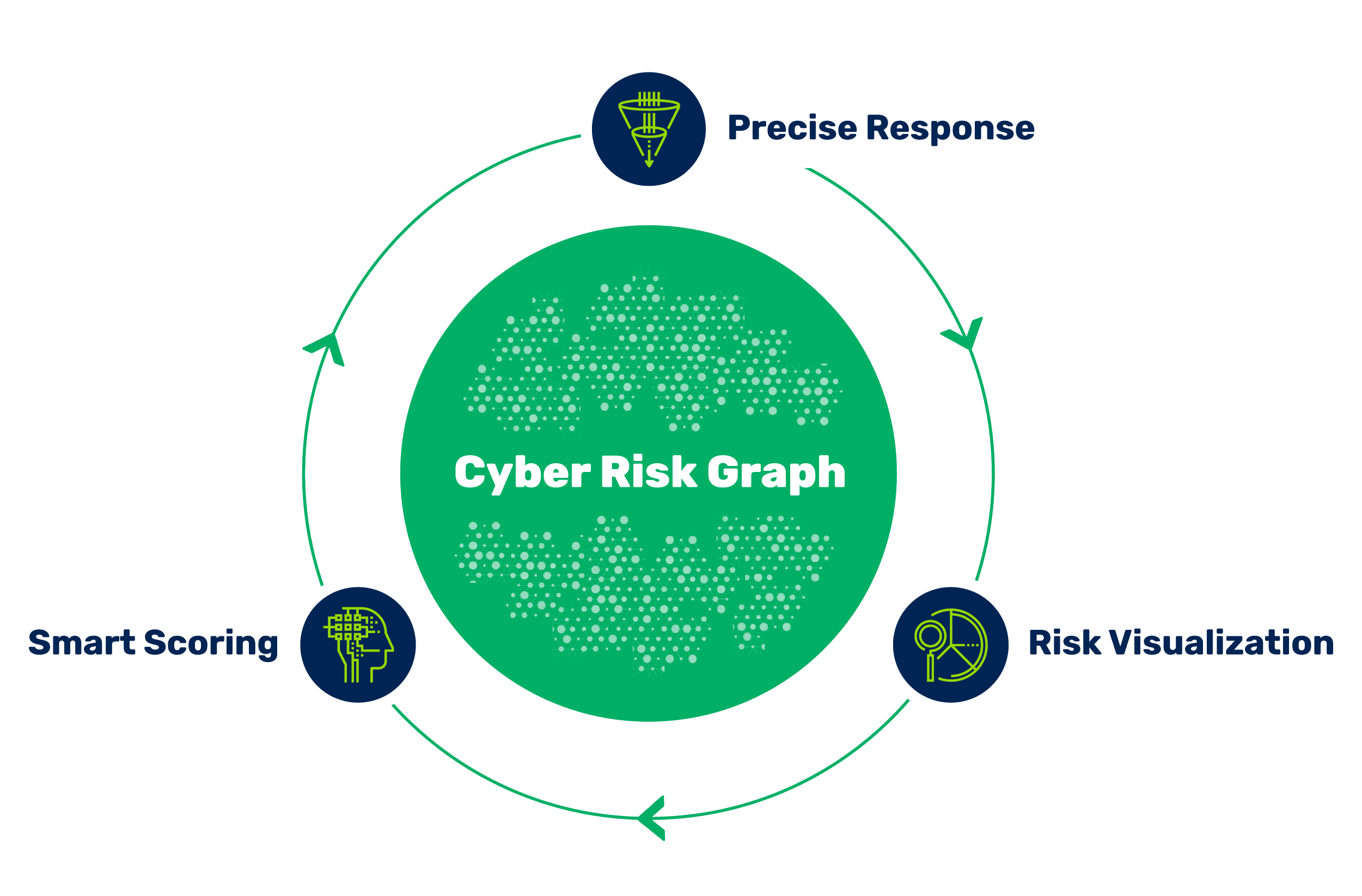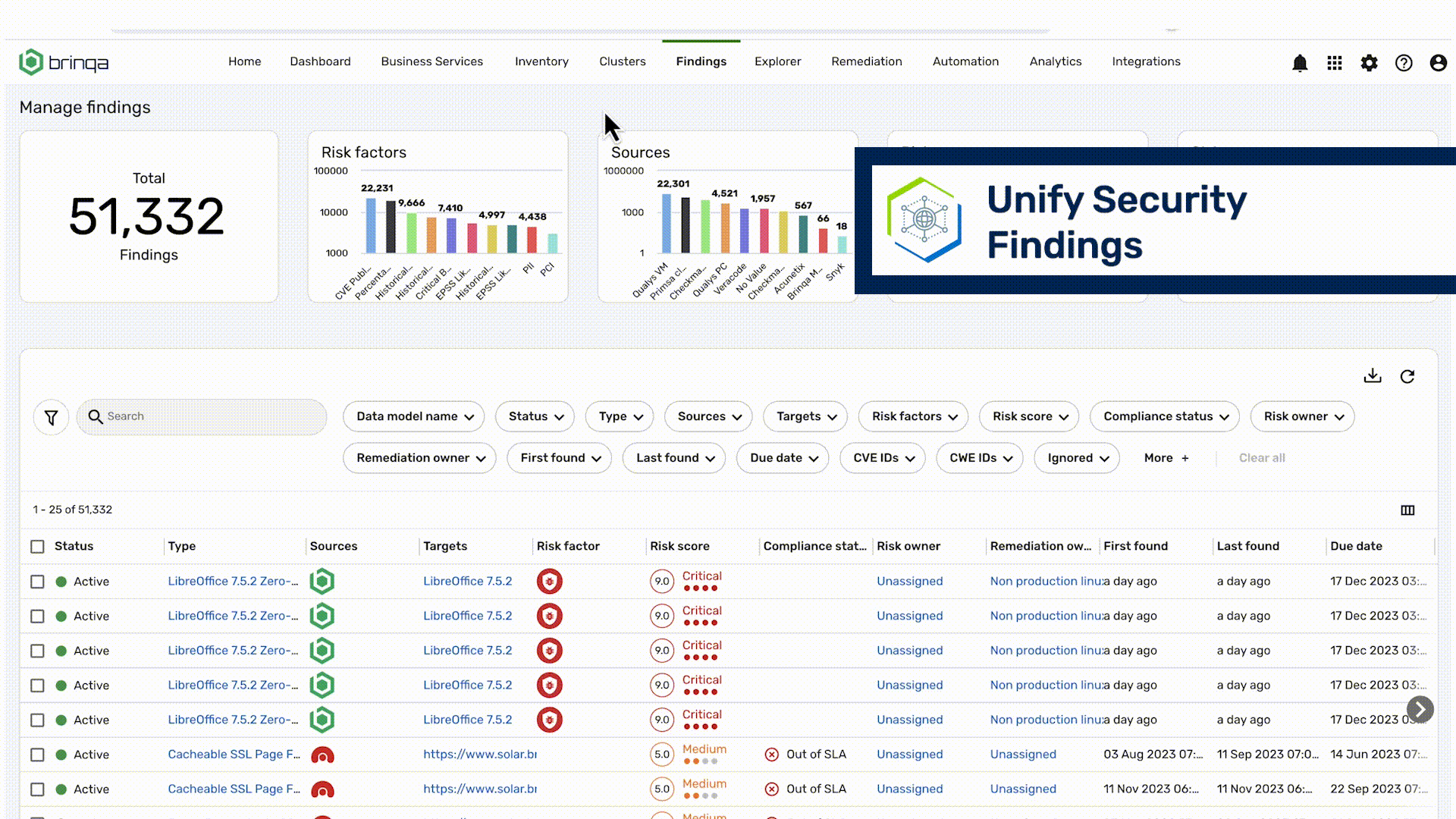
Risk-Based Vulnerability Management Explained: How to Prioritize What Matters Most
Learn MoreBrinqa helps you reduce vulnerability overload and focus remediation efforts on the exposures that matter most—so you can demonstrate risk reduction, not just scan coverage.

Instantly filter through the millions of vulnerabilities distracting your teams. Go beyond CVSS with risk scores automatically tailored to your business with context from your assets, existing security controls, and more.

Hopping from tool to tool doesn’t get you the full picture of assets and their vulnerabilities. Get an instant understanding of risk with a unified view across your traditional and cloud infrastructure.

“We achieved a 90% reduction in critical vulnerabilities and a 75% reduction in high-severity vulnerabilities with Brinqa.”
If you don’t know which vulnerabilities pose the biggest threats to your business, the rest doesn’t matter. See how the team at Nestle took control of vulnerability and risk management across the enterprise.

Fix high-risk findings fast with automated remediation capabilities including ticket creation, owner assignment, notifications, and validation. Create workflows for risk acceptance, false positives and exception requests.

Vulnerability assessment is the process of identifying, quantifying and prioritizing vulnerabilities in the software, hardware, cloud, and on-premises assets that make up an organization’s attack surface.
Vulnerability management is the operational practice of identifying, classifying, remediating and mitigating vulnerabilities across an organization’s attack surface.
Risk-based vulnerability management is the process of prioritizing, remediating and reporting on vulnerabilities based on the risk they pose to the business.
Traditional vulnerability management lacks the business context and threat intelligence to prioritize vulnerabilities based on the risk they pose to the specific business. Too often, vulnerability management programs rely solely on CVSS scores or scanner results to assign a priority, leaving security teams drowning in vulnerabilities and application and operations teams frustrated by chasing down and fixing vulnerabilities that don’t matter.
The objectives of a vulnerability risk management program are to identify, prioritize, communicate and remediate only the vulnerabilities that matter to the business.
A well-run risk-based program delivers the following benefits:
A risk-based approach enables the business to reduce the right cyber risks fast, while minimizing business disruption.
Powered by the one-of-a-kind Cyber Risk Graph, the Brinqa Vulnerability and Exposure Management Platform enables security professionals to centralize findings, prioritize threats based on real-world risk, automate remediation, and communicate outcomes that matter.

See how Brinqa can help you evolve from vulnerability triage to a proactive, business-aligned risk management program. Request a personalized walkthrough of the Brinqa Platform.








Move from periodic scans to continuous exposure awareness, prioritization, and remediation.

Bring visibility, context, and coordination to your application security program.